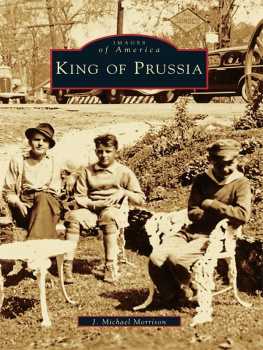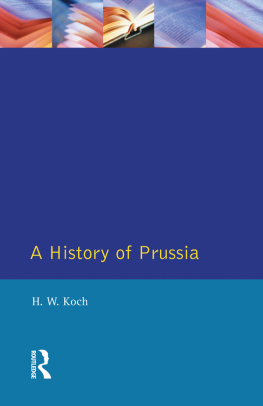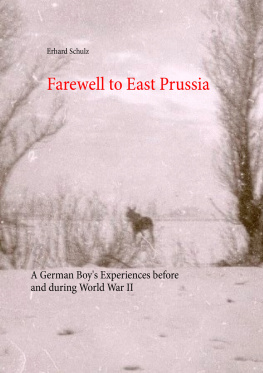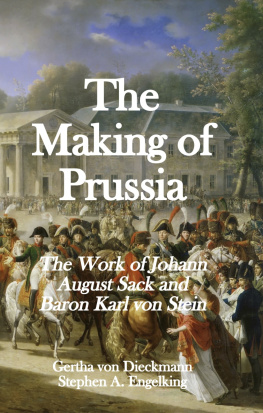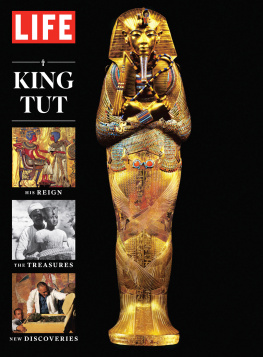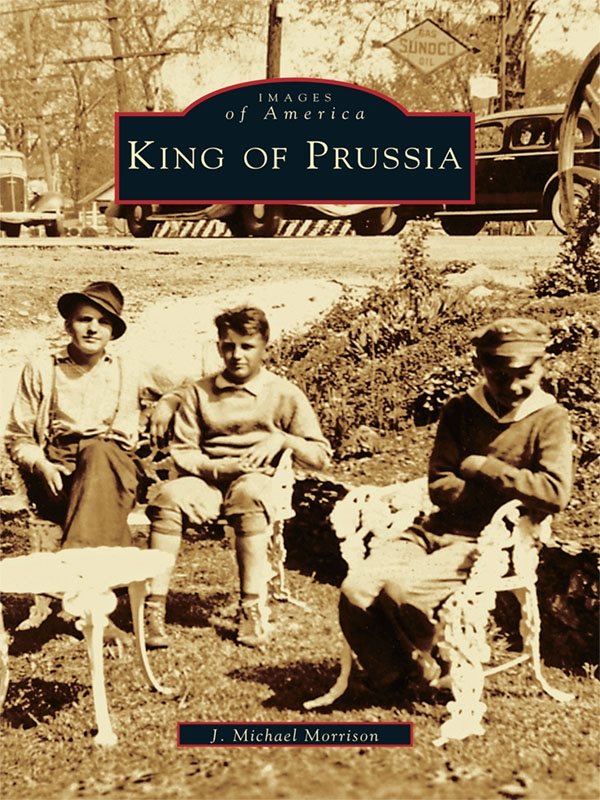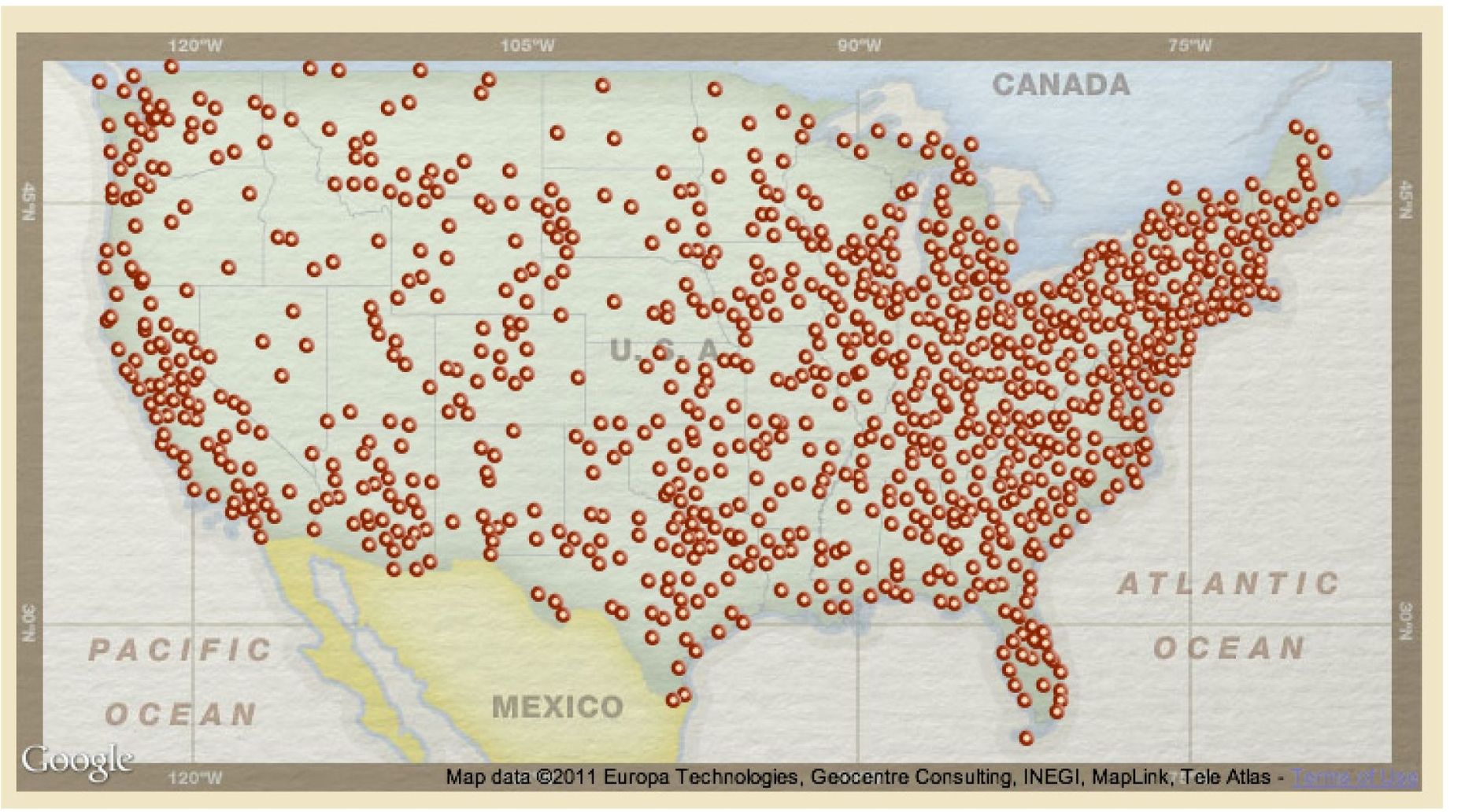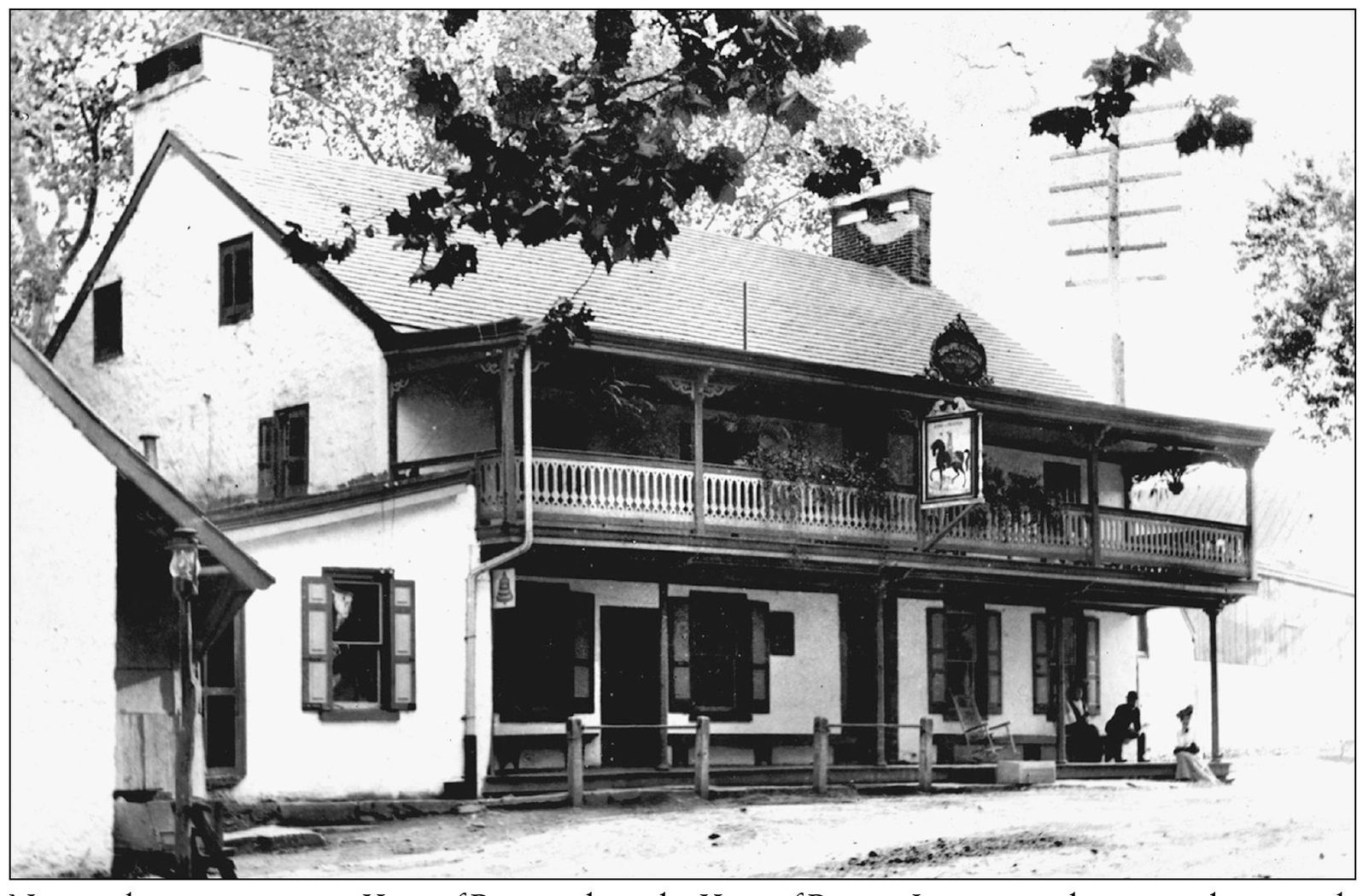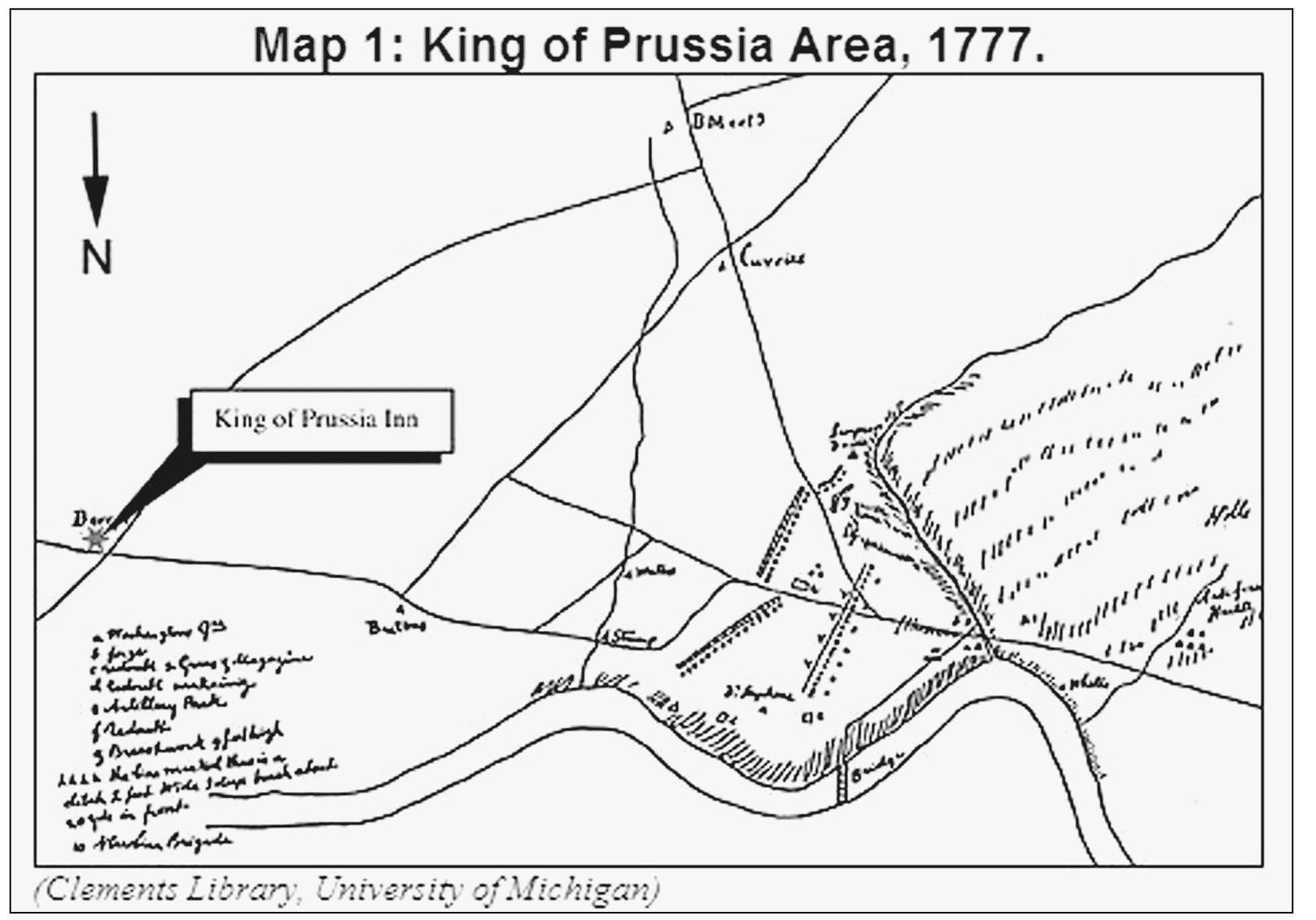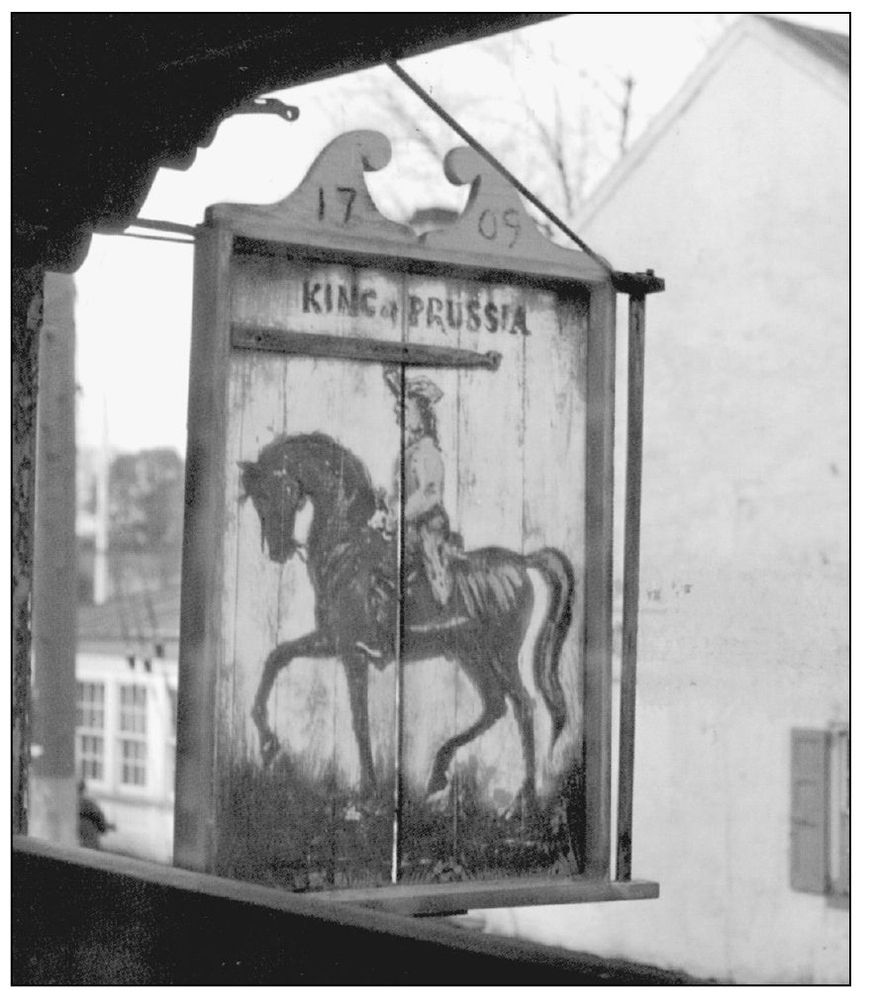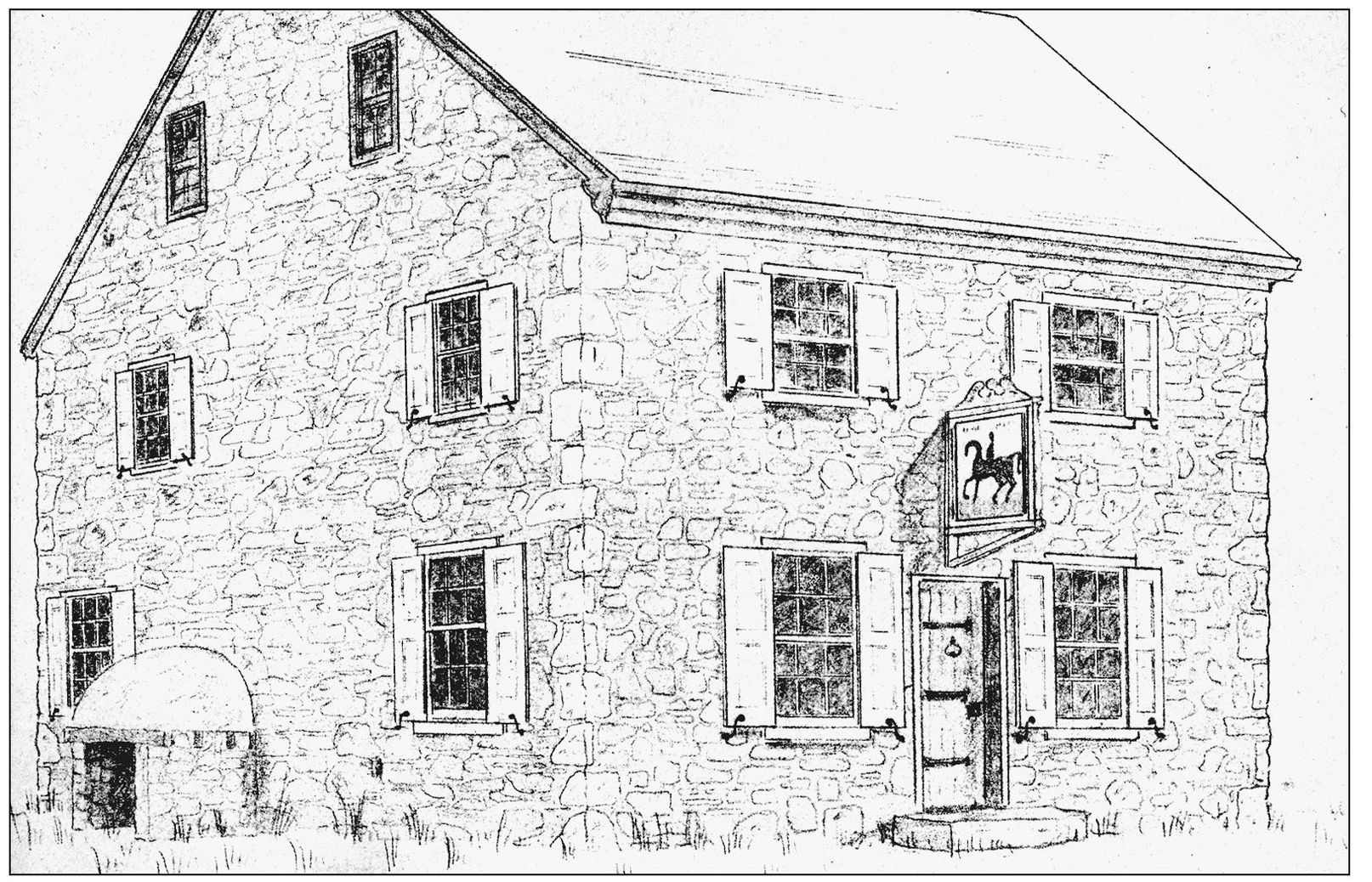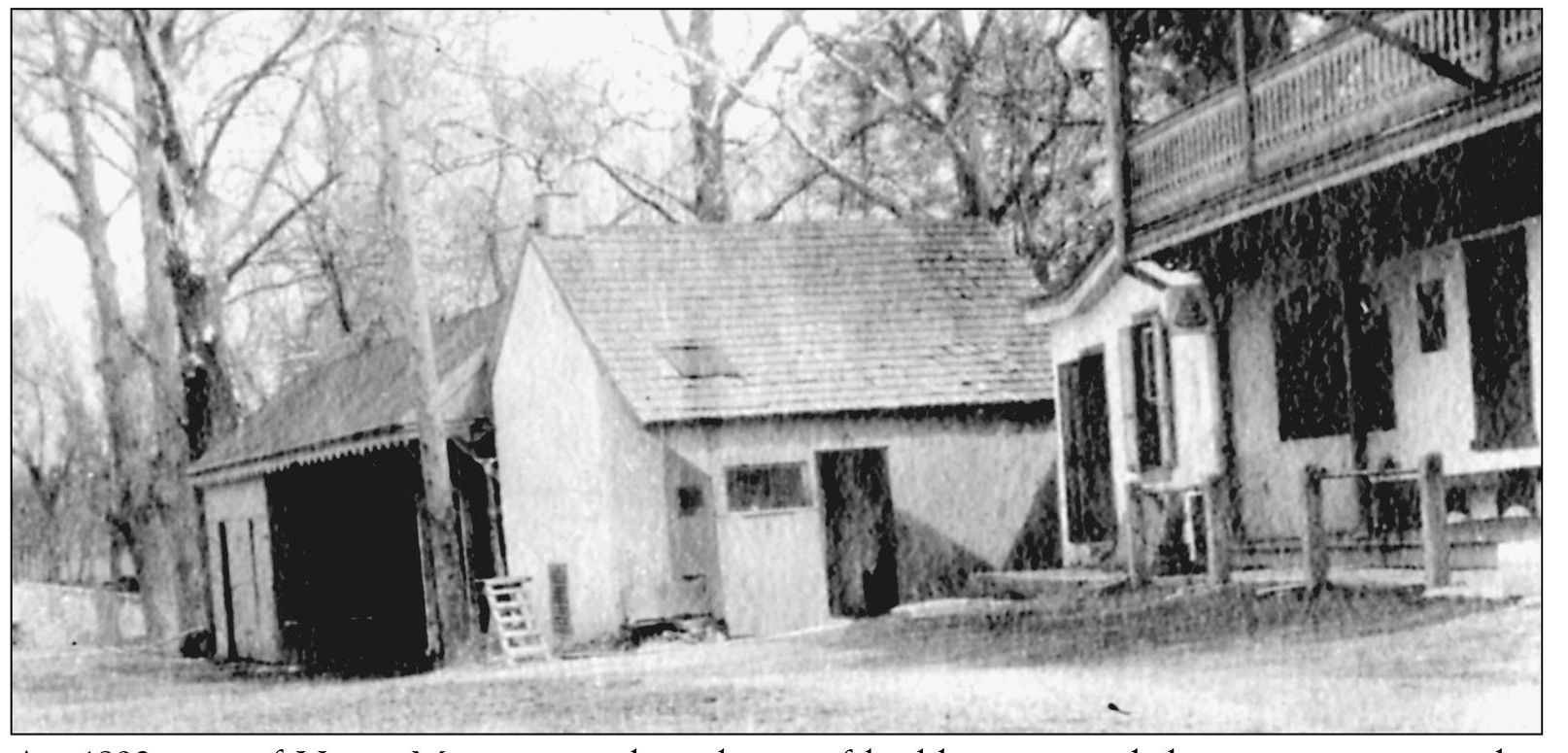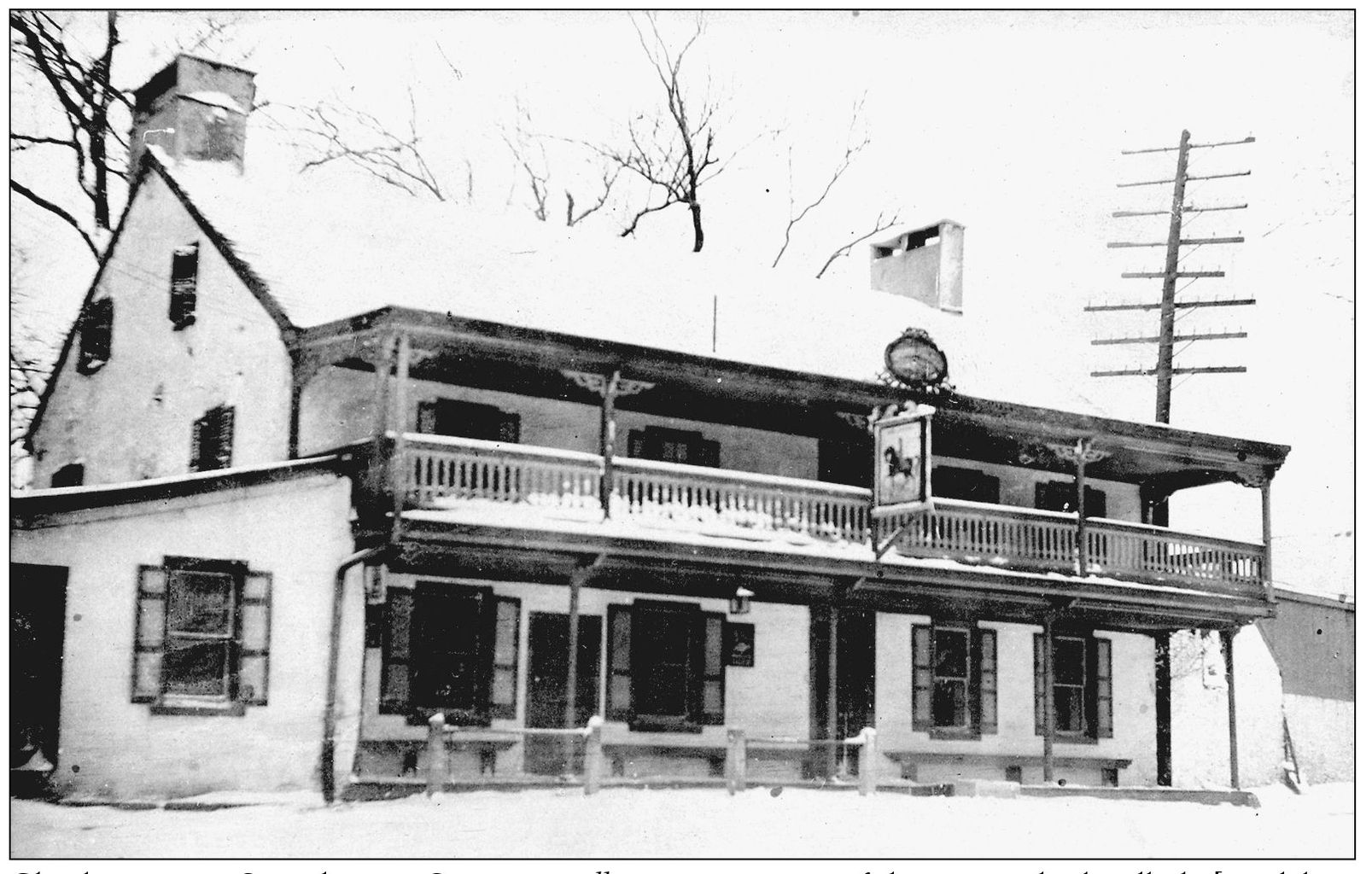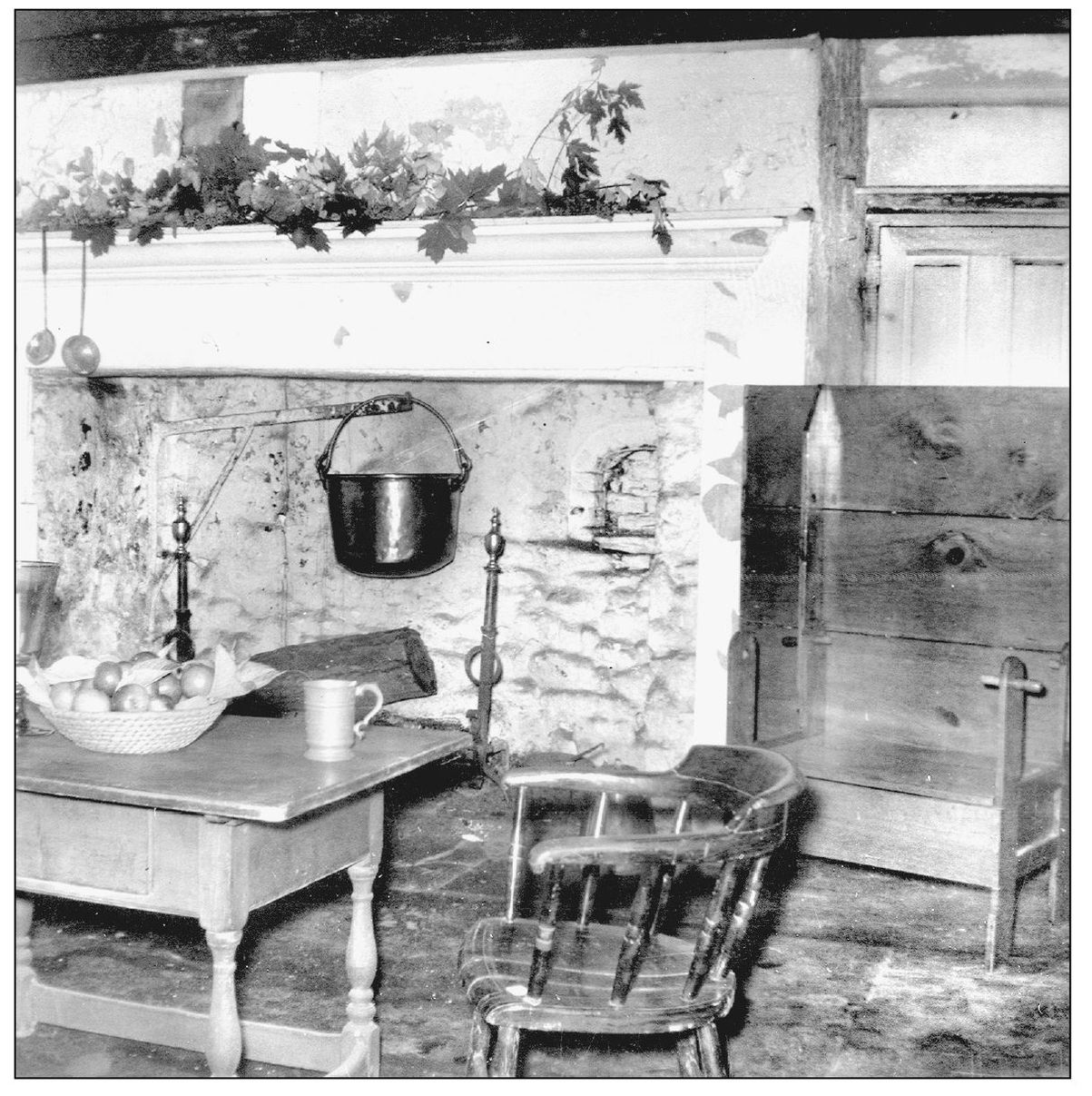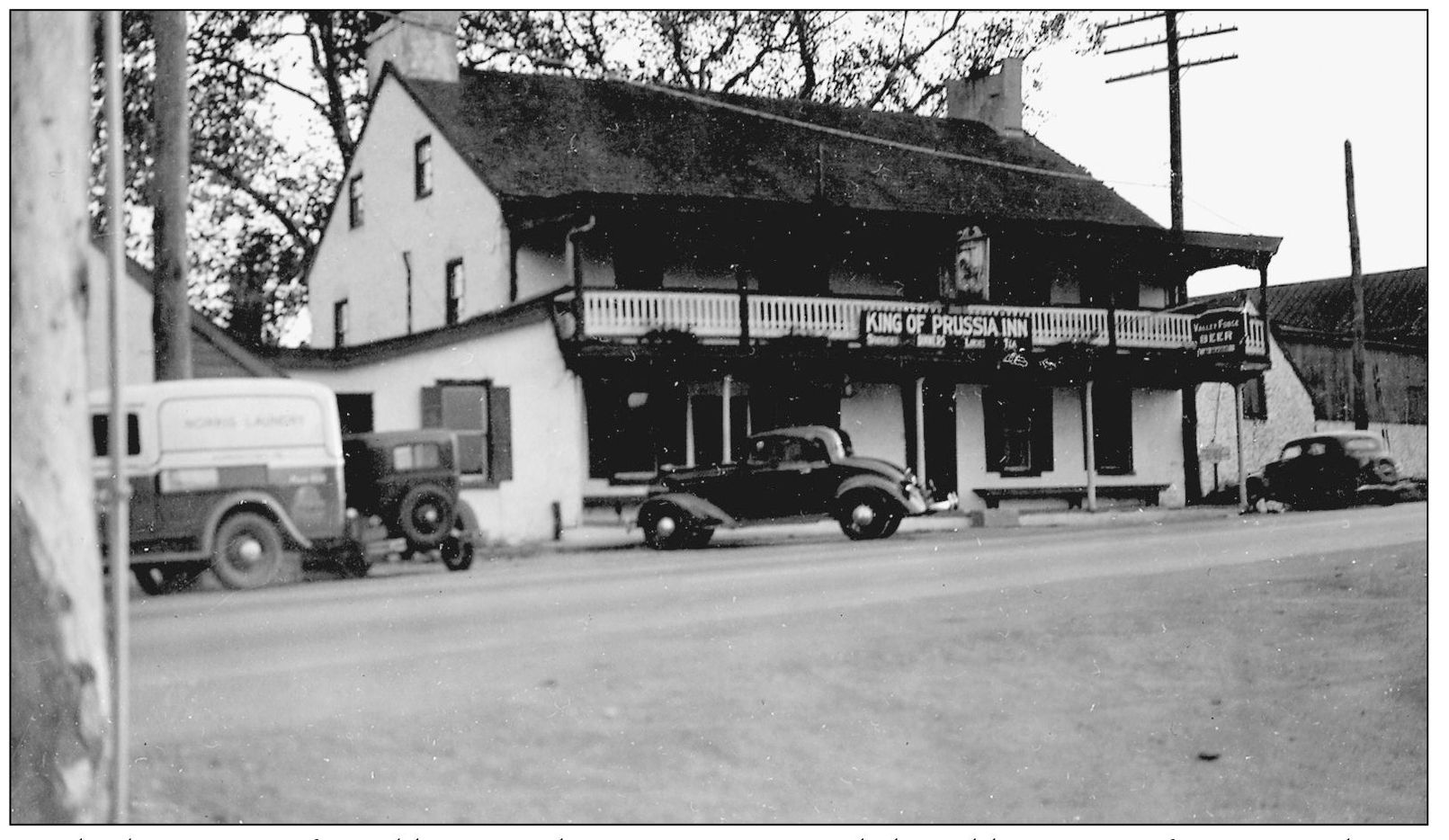One
AT THE SIGN OF THE KING
No icon better represents King of Prussia than the King of Prussia Inn as seen here in a photograph from the early-1900s. The view is west, looking down Swedesford Road (that would later become U.S. 202, DeKalb Pike). By this time the town was well established, and people all over the area used the inn as a meeting place, convenient to all. The practice was to tell someone to meet at the sign of the King, later simplified to just the King.
The University of Michigan has a wonderful prize in its archive. The Parker Spy Map, drawn in 1777 by British spy William Parker, is a detailed rendering of the area where George Washington was encamped. A portion of the map seen here includes the King of Prussia area, which was a haven for spies from both sides. The inn is referred to as Berrys, named after the proprietor and licensee at the time, James Berry. Swedesford road (U.S. 202) is also included on the map, and dates as far back as the 1680s. (Courtesy National Park Service.)
The Sign of the King welcomed visitors for almost 200 years, and may have been the source for the town receiving its name. Although the year 1709 is clearly written on the sign, no proof exists that there was an inn there. In addition, the image represents Frederick the Great (17121786), who was a powerful ruler in 1769. The sign was sold in 1920 to a resident of Philadelphia for $200, amid growing resentment towards Germany with the advent of World War I. The sign was finally recovered from an auction in 1960 by the authors grandmother, and returned to the King of Prussia Historical Society, in whose hands it is still entrusted today. (Courtesy Pennsylvania Department of Transportation.)
An artists rendering from 1959 shows how the inn probably appeared in 1769, when its owner William Rees partially converted his farmhouse into a tavern, which continued as a public house through over half of the 20th-century. Records of this time period are sketchy at best. The earliest reference to the inn is a tavern license issued to Philip Rees in 1762. The earliest reference to the land appears in a deed recital under the hands and seals of Rees Thomas and James Logan dated November 16, 1714, however, there is no evidence of a tavern existing there at that time.
An 1893 map of Upper Merion reveals a cluster of buildings around the inn, as seen in this photograph dating from sometime between 1913 and 1930. These buildings consisted of a stable, carriage house, and storage shed. In 1902, George W. Holstein wrote of a conversation he had with Charles S. Elliott, son of John Elliott Jr., who owned the inn from 1841 to 1868. He [C. Elliott] thought it [King of Prussia] commanded a position which should make it valuable as a business center and attractive as a place of residence. How prophetic those words would prove to be. (Courtesy Jean Wolf from the James Crosby Brown Collection.)
Charles Francis Saunders, in Country Walks in 1889 wrote of the inn, The landlady [Madeline B. Hoy], a buxom widow of 45, meets you at the door and invites you in. An old fashioned clock ticks in the hall and the floor slants invitingly to the sitting room with its low ceiling and broad window seats.
Charles Francis Saunders continues; The meals are of the country kind-plain, well cooked and substantial and apt to terminate in three kinds of pies. If you come to supper you will probably have waffles, than which a no pleasanter fate can befall you. The kitchen which supplies the tables with the delectables referred to is one of the kind you read about-the big old fireplace and the crane and the ceiling ribbed with smoky rafters. (Courtesy Historical Society of Montgomery County.)
At the beginning of World War I, the inn was renamed the Old King Inn for a time, due to overwhelming anti-German sentiment. According to Sen. Philander C. Knox in a letter dated August 9, 1918, A few patriotic citizens a few nights ago shot up the old sign-board of the King of Prussia Inn, and I believe that citizens who reside in the neighborhood are no longer registering themselves as from King of Prussia. For a short time there was even talk of changing the name of the town. In fact, a newspaper report of the time tells that the people asked to consider the name change of King of Prussia because of the resemblance of the name to that of a recent warring country and to change the name to Port Kennedy (a close neighbor), which is more suitable.

